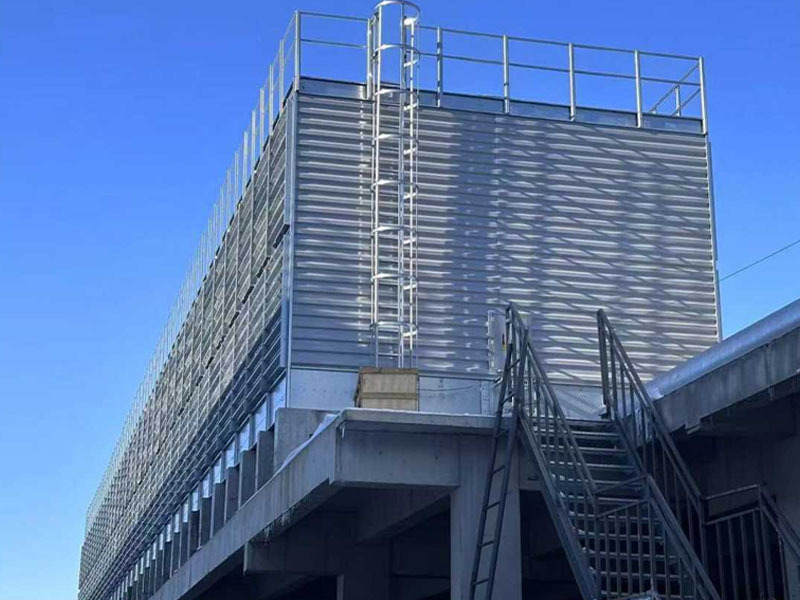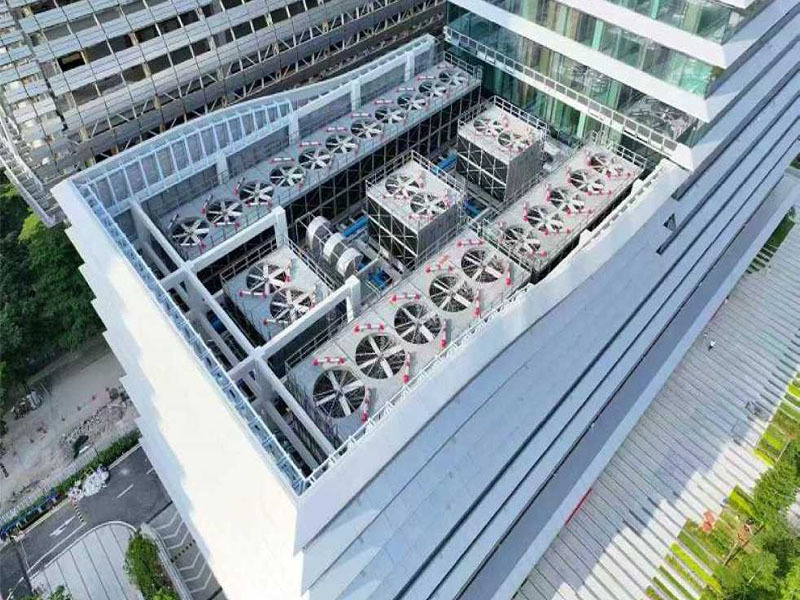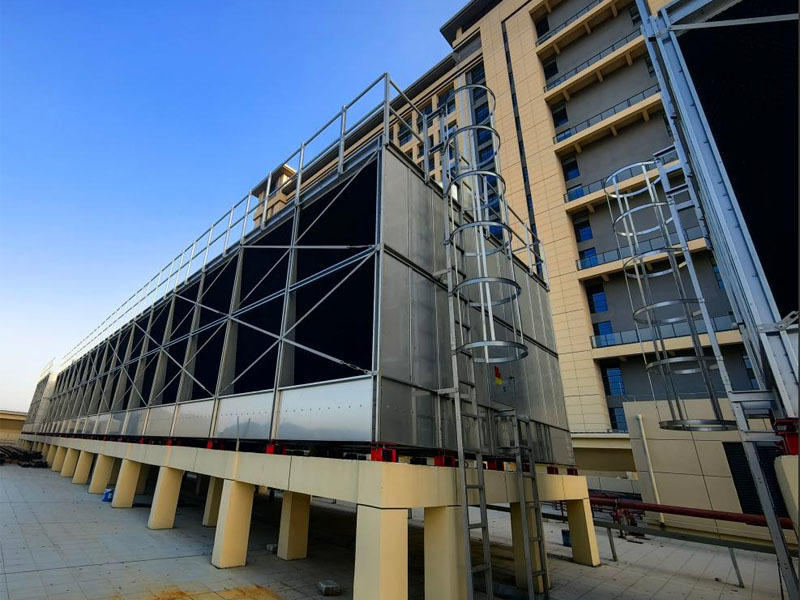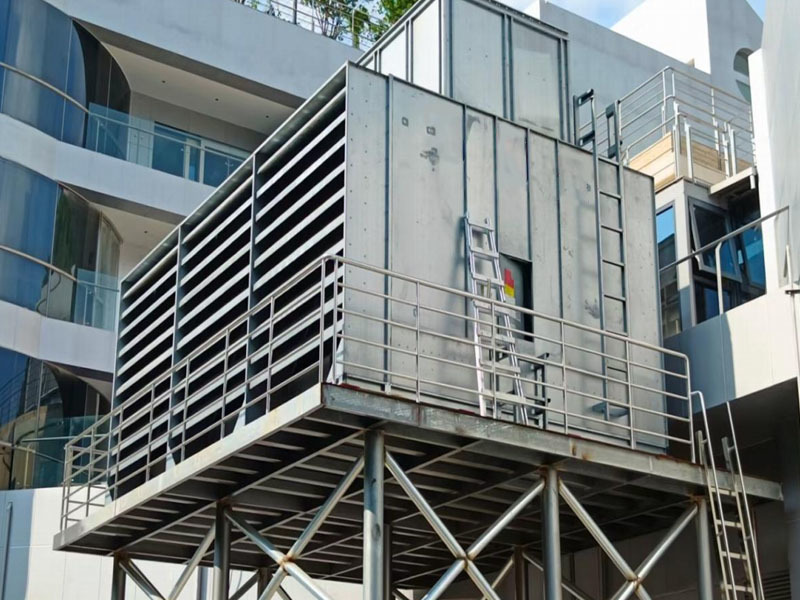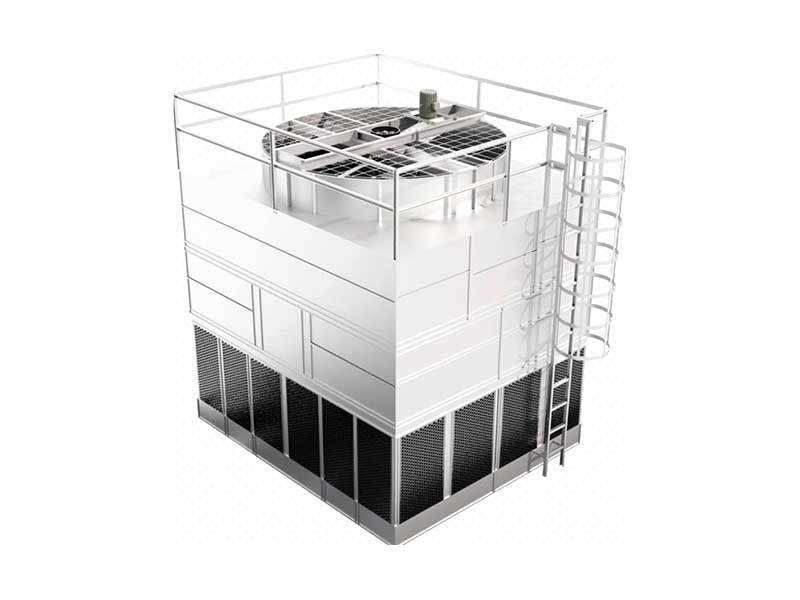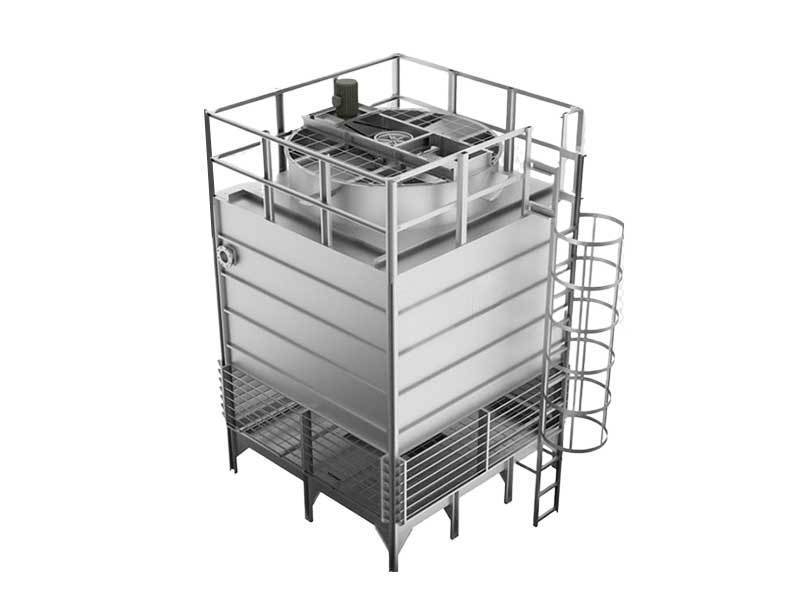Closed Counterflow Cooling Towers
Keywords:
Category:
- Product Description
-
### Closed-circuit Counterflow Cooling Tower
In modern industrial and building sectors, efficient and environmentally friendly cooling systems are crucial for maintaining stable equipment operation and energy conservation and emission reduction. Closed-circuit counterflow cooling towers, as advanced cooling equipment, stand out among numerous cooling solutions due to their efficient heat exchange, low energy consumption, and environmental friendliness. This article will delve into the working principles, structural characteristics, application advantages, and maintenance of closed-circuit counterflow cooling towers.
#### 1. Working Principles of Closed-circuit Counterflow Cooling Towers
The core of a closed-circuit counterflow cooling tower lies in its unique heat exchange mechanism. Unlike open cooling towers, the circulating water inside a closed-circuit cooling tower does not directly contact the outside air but instead transfers heat through a heat exchanger (usually a coil). During operation, the circulating water flows inside the coil, while the outside air is forcibly drawn into the tower by a fan, creating a counter-current flow. This counter-current design allows for more thorough heat exchange between the air and the outer wall of the coil, effectively improving cooling efficiency.
Specifically, high-temperature circulating water enters the cooling tower and flows within the coil. Simultaneously, the fan at the top of the tower starts, drawing in low-temperature outside air. The air flows upwards within the tower, counter-currently exchanging heat with the hot water in the coil. As heat is transferred between the air and the coil wall, the temperature of the circulating water gradually decreases, while the air is heated before being expelled from the tower. This process achieves efficient heat transfer, ensuring continuous cooling of the circulating water.
#### 2. Structural Characteristics
The structural design of a closed-circuit counterflow cooling tower fully considers efficiency and durability. Its main components include: tower body, heat exchange coil, fan, spray system (some for environmental control), water collector, water tank, and control system, etc.
- **Tower Body**: Usually made of corrosion-resistant materials, it has good sealing and insulation properties to prevent the entry of external pollutants and reduce heat loss.
- **Heat Exchange Coil**: Uses high-efficiency heat-conducting materials such as copper or stainless steel to ensure rapid heat transfer.
- **Fan**: High-efficiency energy-saving fans provide strong air power to promote heat exchange between the air and the coil.
- **Spray System** (optional): Used to moisten the air, enhancing heat exchange efficiency; some designs are used to maintain the humidity within the tower.
- **Water Collector**: Effectively collects and recovers water mist expelled with the air, reducing water waste.
- **Water Tank**: Stores circulating water to ensure stable system operation.
- **Control System**: Intelligent control that can adjust fan speed, water temperature, and other parameters according to actual needs to achieve efficient and energy-saving operation.
#### 3. Application Advantages
Due to its unique design, the closed-circuit counterflow cooling tower exhibits various application advantages:
1. **High Efficiency and Energy Saving**: The counter-current design improves heat exchange efficiency, and the intelligent control system significantly reduces energy consumption.
2. **Environmentally Friendly and Water-Saving**: The circulating water operates in a closed loop, avoiding direct evaporative water loss and environmental pollution.
3. **Strong Adaptability**: Unaffected by external environments (such as wind and dust, dirt), suitable for various harsh climatic conditions.
4. **Easy Maintenance**: Compact structure, small maintenance workload, and clean circulating water quality extend the service life of the equipment.
5. **Water Quality Protection**: Avoids the problem of easily polluted water quality in open cooling towers, suitable for occasions with high water quality requirements.
#### 4. Maintenance
To ensure the long-term and efficient operation of closed-circuit counterflow cooling towers, regular maintenance is essential. The main maintenance measures include:
- **Regular Inspection**: Check the operating status of components such as fans, motors, and coils, and promptly identify and address any abnormalities.
- **Cleaning and Maintenance**: Regularly clean the inside of the tower body, water collector, and coil surface to prevent dust accumulation from affecting heat exchange efficiency.
- **Water Quality Management**: Regularly check the circulating water quality and add corrosion inhibitors, scale inhibitors, etc., as needed, to maintain clean water quality.
- **Electrical Inspection**: Inspect electrical wiring and control systems to ensure safe and stable operation.
- **Seasonal Adjustment**: Adjust fan speed, water temperature settings, etc., according to seasonal changes to achieve optimal energy efficiency.
In summary, closed-circuit counterflow cooling towers, with their high efficiency, environmental friendliness, and strong adaptability, are playing an increasingly important role in modern industrial cooling systems. Through reasonable selection, scientific installation, and regular maintenance, closed-circuit counterflow cooling towers will provide strong technical support for the sustainable development of enterprises.
Inquiry
Service Hotline:
+86-138 2574 5855
+86-189 0261 0628
E-mail:dykj1688@yeah.net
Address: Guangdong Province, Huizhou City, Boluo County, Longxi Town, Longyuan Avenue, Dongyan Technology Industrial Park
Follow us

Scan with your phone
Copyright © Guangdong Dongyan Cooling Equipment Co., Ltd. All rights reserved.
Power by:www.300.cn | SEO | Privacy Policy

